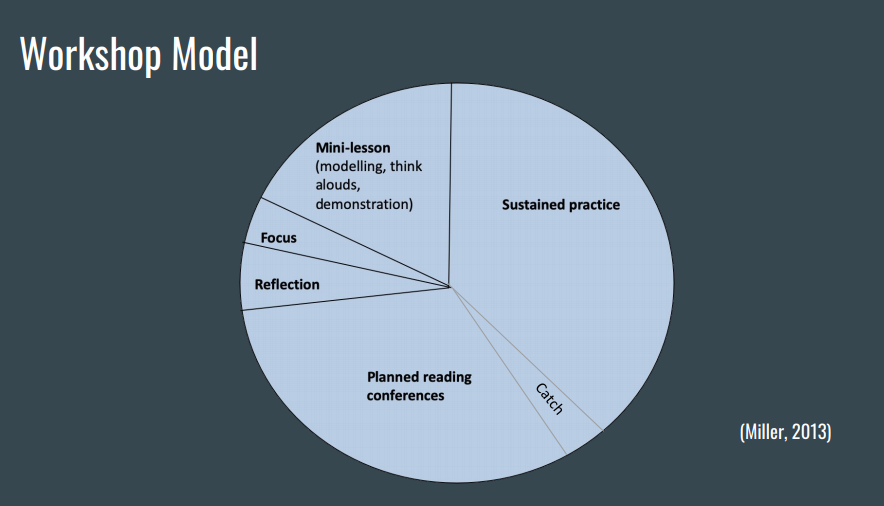Foundations for Literacy at Ngunnawal Primary School
- 10 Essential Literacy Practices
- Reader’s Workshop
10 Essential Literacy Practices (Christine Topfer)
Preschool
- Intentional use of literacy artefacts in dramatic play and throughout the classroom
- Read aloud with reference to print
- Interactive read aloud with a comprehension and vocabulary focus
- Play with sounds inside words
- Brief, clear, explicit instruction in letter names, the sound(s) associated with the letters, and how letters are shaped and formed
- Interactions around writing
- Extended conversation
- Provision of abundant reading material in the classroom
- Ongoing observation and assessment of children’s language and literacy development that informs their education
- Collaboration with families in promoting literacy
Kindergarten to Year 3
- Deliberate, research-informed efforts to foster literacy motivation and engagement within and across lessons
- Read alouds of age-appropriate books and other materials, print or digital
- Small group and individual instruction, using a variety of grouping strategies, most often with flexible groups formed and instruction targeted to children’s observed and assessed needs in specific aspects of literacy development
- Activities that build phonological awareness (grades K and 1 and as needed thereafter)
- Explicit instruction in letter-sound relationships
- Research- and standards-aligned writing instruction
- Intentional and ambitious efforts to build vocabulary and content knowledge
- Abundant reading material and reading opportunities in the classroom
- Ongoing observation and assessment of children’s language and literacy development that informs their education
- Collaboration with families in promoting literacy
Year 4 to 6
- Deliberate, research-informed efforts to foster motivation and engagement within and across lessons
- Intentional, research-informed instruction using increasingly complex texts and tasks that build comprehension, knowledge, and strategic reading activity
- Small group instruction, using a variety of grouping strategies, most often with flexible groups formed and instruction targeted to children’s observed and assessed needs in specific aspects of literacy development
- Activities that build reading fluency and stamina with increasingly complex text
- Discussion of the ideas in texts and how to construct text meaning across texts and disciplines
- Research-informed and standards-aligned writing instruction
- Intentional and ambitious efforts to build vocabulary, academic language, and content knowledge
- Abundant and diverse reading material, including digital texts, and opportunities to read in the classroom
- Ongoing observation and assessment of children’s language and literacy development that informs small group and individual instruction
- Collaboration with families in promoting literacy
The Whole School Approach to Reading is Reader’s Workshop

